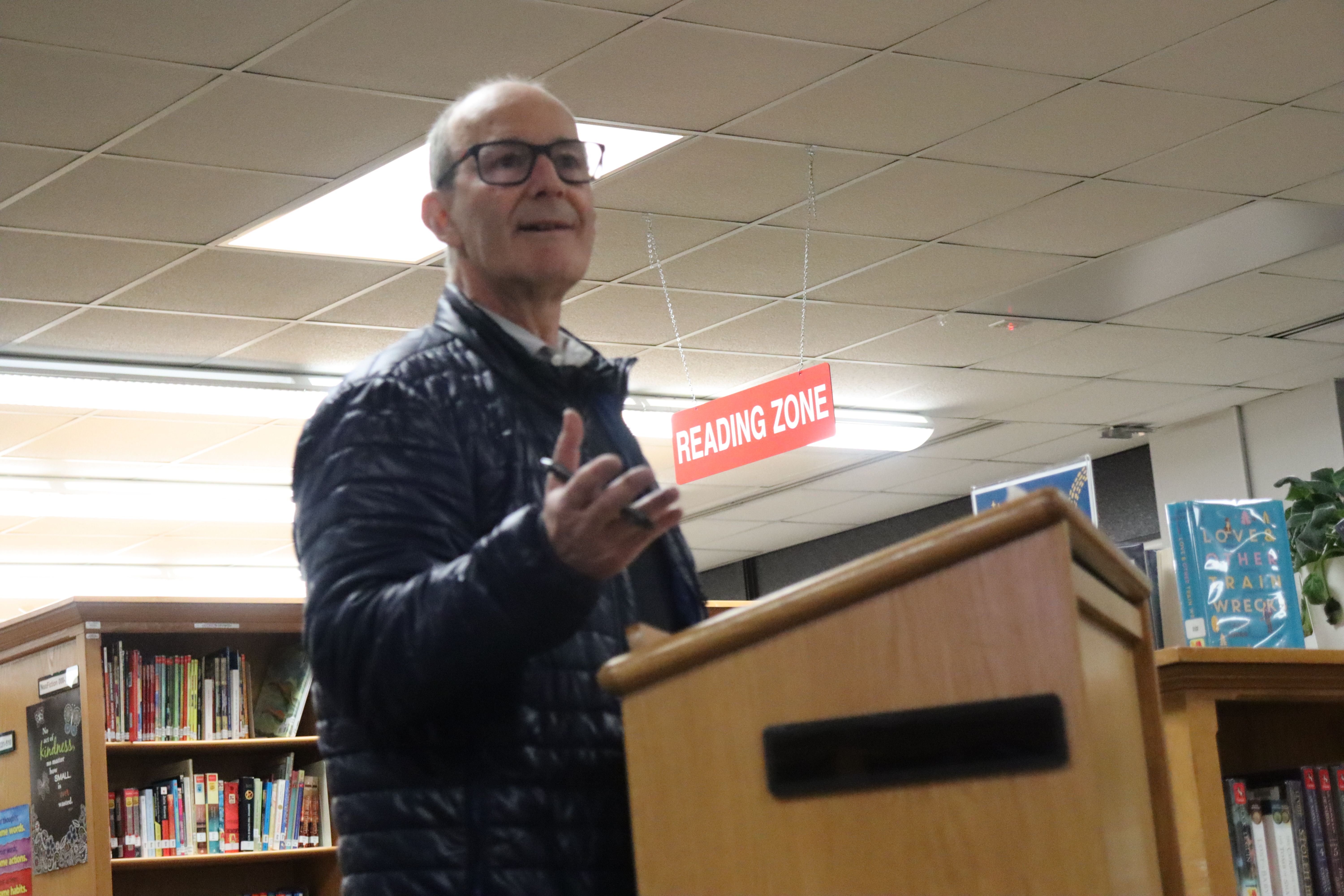
At the first Sag Harbor School Board meeting since district officials announced, via a letter sent to parents late on March 15, that they would seek to buy the Marsden lots on their own, without a $6 million contribution from the Southampton Town Community Preservation Fund, district officials said they are working to ensure they can include a proposition on the May ballot asking the community to approve what would be a $9.3 million purchase of the land, located across the street from Pierson Middle-High School.
At the Monday night meeting, March 20, Superintendent of Schools Jeff Nichols clarified exactly what that community referendum would be asking of voters.
“It’s simply for acquisition,” he said. “We’re no longer involved in extensive talks about the plans or any modifications. At this point, we’re just consulting with our attorneys with regard to the next steps we need to take to comply with what we need to have the vote on May 16.”
Several community members who have been vocal critics of the acquisition from the start spoke at the meeting, reiterating their main points of opposition to the purchase and to the preliminary plans the district had submitted to the town to build a full-size athletic field and comfort station on the four adjoining lots on the north side of the street, and a parking lot on a single lot that is part of the overall acquisition on the south side of the street.
They objected to the cost, pointing out that the $9.3 million price tag only covers the acquisition of the lots, and that the district would need to spend another $3 million or $4 million, possibly more, to develop them at some point down the road, if the community approves the purchase. District voters in November approved the expenditure of $3.3 million from district capital reserves to partially cover the cost of the purchase, but the district will need to seek approval from voters again for the use of those capital reserves,--in addition to seeking approval for the $6 million bond--since the deal with the CPF is now off.
Alastair Hawker, a frequent critic, wanted to know if the district planned to pursue artificial turf again — a possibility that had been taken off the table when the district was still in partnership with the CPF because the Town Board had made a commitment to a natural grass field as one of its terms of agreement.
In response to specific questions about what the plans would be for the lots, School Board Vice President Brian DeSesa said the district is not trying to evade those questions, but rather taking a “one step at a time” approach in regard to the acquisition.
“The intent of the board right now is to acquire the property,” he said. “Any future school needs will be done by open meeting, with community forums, driven by the school and its facility needs. That will happen if and only if we acquire the properties. I think it’s a misstatement to say we’re not answering questions just because you’re not getting the answer you want.”
A new, more restrictive cellphone policy for students could be coming at Pierson Middle-High School, and if the initial response to a presentation outlining it at the board meeting on Monday night is any indication, it would be well-received by teachers and parents alike.
Andrew Richards, a representative from a company named Yondr, gave a presentation at the meeting on a product sold by the company that helps eliminate the distraction of cellphones at events and concerts — and also in school districts.
The company sells a patented pouch that locks when it is closed. The magnetic lock can only be unlocked by a small, handheld circular device similar to the mechanism used to remove security tags from clothing sold in retail stores.
In schools it partners with, Yondr works with administrators to develop a plan and policy for implementing the pouch system, and then assists with other aspects of community engagement and implementation of the system.
Essentially, students are required to place their phones in their pouches and lock the pouch at the start of the day, under the guidance of staff — to ensure they don’t find creative workarounds, like slipping a stick of deodorant in the pouch instead of their phone — and then are permitted to unlock the pouch only at dismissal.
Middle-High School Principal Brittany Carriero and School Board member Jordana Sobey were involved in bringing the presentation to the board, and Carriero explained that the district decided to reexamine its cellphone policy because the high school’s shared decision-making committee had become concerned about cellphone use in schools.
Carriero said cellphone use has been a bigger distraction and problem in the high school than it has been in the middle school. Students are required to put their phones away when they arrive at school, but students will frequently take trips to the bathroom and take their phones with them, and then text their parents and friends or use social media when out of the classroom.
“In the high school, it’s up to them to be their check-in point with how they use the phone,” Carriero said. “But we’ve seen an increase in push-back from students, and lack of attention in the classroom, because of how attached they are to their phones.”
Several School Board members said they would support the implementation of the pouch system, and two parents weighed in during public comment saying they would welcome the new policy.